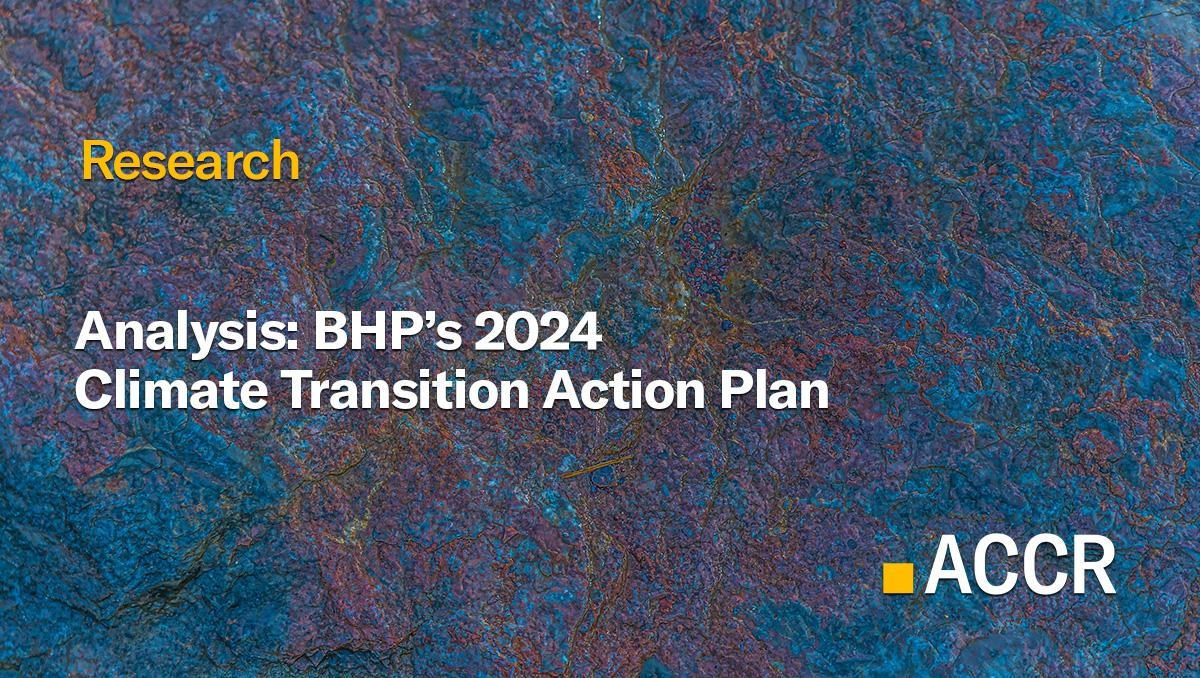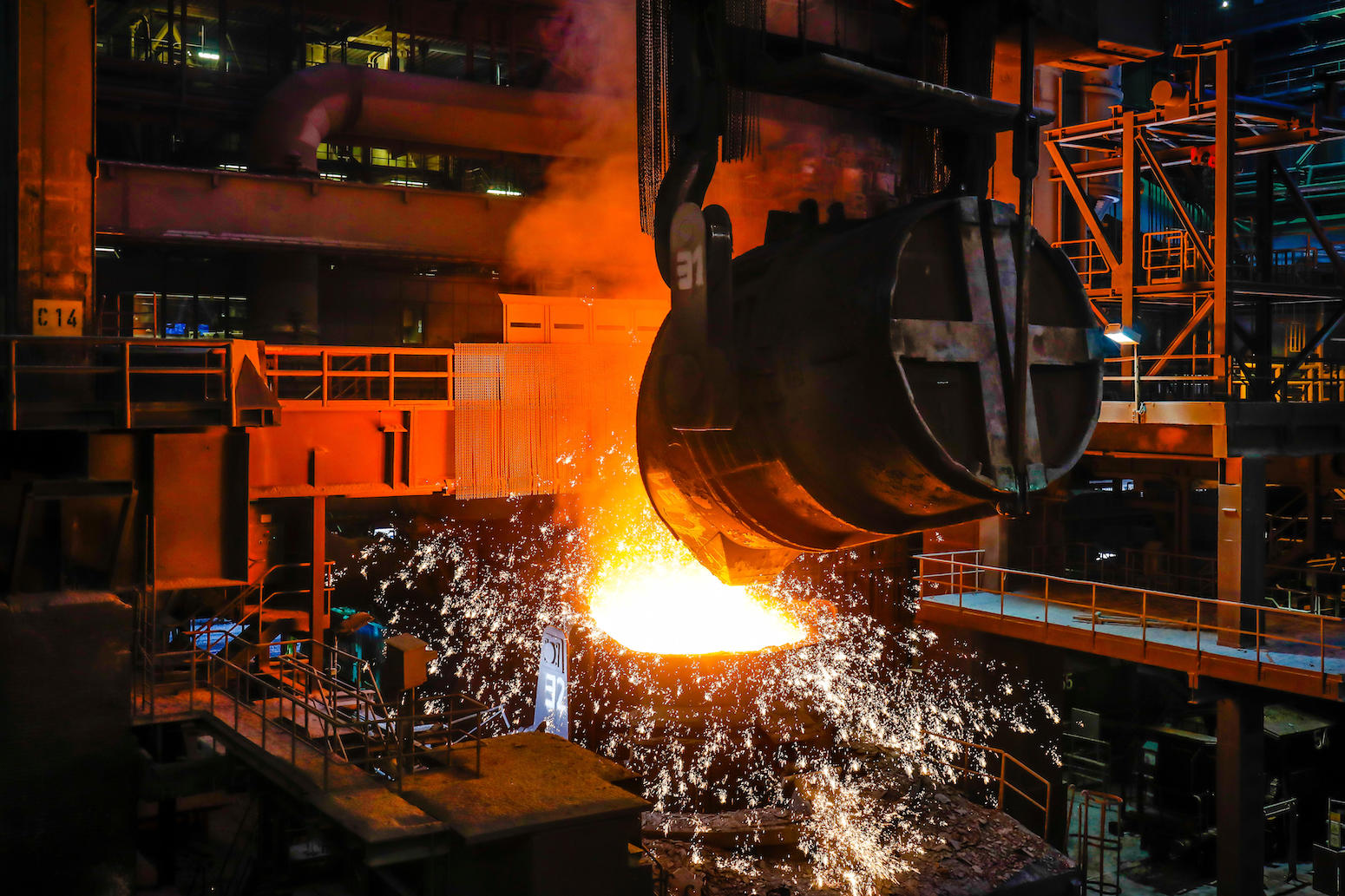
Sunday Brunch: Yes, its true, accounting really does matters
Accounting is the language of business - most investors would be lost without accounting numbers. And generally we need better sustainability related disclosures - a mining case study.
Accounting and company financial disclosures might seem a dry subject, only really of interest to sustainability geeks. But they matter, and they matter a lot to financial people. And as a result they should also matter to professionals who care about sustainability.
To quote Warren Buffett in his 2023 Berkshire Hathaway letter to shareholders ....
“Accounting numbers, of course, are the language of business and as such are of enormous help to anyone evaluating the worth of a business and tracking its progress. Charlie (Munger) and I would be lost without these numbers: they invariably are the starting point for us in evaluating our own businesses and those of others".
How can we make accounting more real, taking it from the abstract to the real. It's obvious isn't it - by looking at a real world example. In this case it's a mining company with a material financial exposure to iron ore and steel making coal.
How they account for the possible sustainability changes matters. In this particular case how they are preparing for the decarbonisation of steel making not only makes a difference to the accounting value of their resources in the ground. It also will be reflected in how investors perceive the company's future profits and cashflows.
And this could drive changes in the share price, and the company's ability to raise debt at a reasonable price.
Preparing for steel decarbonisation
Our example is a global mining company with a material exposure to both iron ore and steel making coal. Regular readers will know that we have written a fair bit about the steel industry transition. The short version is that while it's not going to be easy or quick transition, low carbon alternate technologies are either already in use or rapidly moving to commercialisation.
So this is a change that we consider mining companies need to be preparing for.
Put simply, if you generate a large proportion of your profits from iron ore and steel making coal, then you need to explain to your shareholders how you are preparing for the change, and what you consider the financial implications might be of the different choices that your end customers in steel making might make.
Without this shareholders cannot make informed investment decisions.
In financial terms we call this disclosure. But the word means something different to the finance industry. Disclosure sounds to most people as something passive, and maybe something that makes little difference. I am sure that if you asked people on the street they would say it's not connected to actions.
But finance people see disclosure differently. As the Warren Buffet quote points out, we use accounting disclosures to identify what a company is worth, and how well it is doing in delivering its strategy. Put simply, accounting disclosure drives the share price. And all companies care about their share price.
But, it's also worth reiterating - disclosure (or targets or plans) on its own is a meaningless process. If it doesn't drive action then there is little point to it. More disclosure is not the same as better disclosure. Better disclosure leads to action. More disclosure just takes up resources and can even act as a distraction.
If you want to read more about this mining company example, then we recommend the detailed analysis from the ACCR (the Australasian Centre for Corporate Responsibility) plus there is a related webinar.

And we have contributed to a proxy voting report from PIRC, Europe's largest independent corporate governance and shareholder advisory consultancy. You can read the report here. This report is part of a wider pilot programme to aid asset managers and asset owners in deciding how to vote on AGM items and in setting up meaningful and detailed climate related engagement programmes.
And not wanting to ruin the surprise, but we and the ACCR consider that while disclosure by BHP has got a lot better, they still do not give investors the information they need.
First some background to accounting disclosure by those mining companies involved in producing iron ore and coal - used to make steel. And don't worry, you don't need to understand steel making chemistry to make sense of this.
How is steel currently made, and how might it change?
Most steel production is currently carried out using what is known as blast furnace-basic oxygen furnaces (BF-BOF). Around 70% of total global steel production is via this route.
Coal is at the heart of this process. The BF-BOF process generates a large amount of Green House Gases (GHG). About 86% of steel production emissions came from BF-BOF production, according to a benchmarking report from 2022. As a result the iron and steel industry accounts for 11% of global carbon emissions and 7-9% of global greenhouse gas emissions.
It's clear that if we are to deliver on our collective net zero targets, then we need to shift production away from BF-BOF. And many governments, and steel end users, are recognising this.
Solutions exist. The most advanced commercially is what is known as Electric Arc Furnace (EAF), which mostly uses scrap steel as a raw material source. And which produces a less GHG's than BF-BOF. And I mean a lot less.
The steel industry already produces a lot of steel using EAF, and it's moving to use it more. And a shift to using more scrap steel could result in lower demand for iron ore and steel making coal, subject of course to the offsetting factor of higher demand for steel.
How rapid is the shift to EAF and lower emitting alternatives?
Much quicker than you might think. Let's start with EAF, an already well proven and well used technology. Back in March 2022, so just over 2 years ago, planned new steelmaking capacity was 67% BF-BOF versus 33% of EAF. So broadly reflecting the existing production mix.
But by March 2023, just a year later, only 57% of planned capacity was BF-BOF and the remaining 43% was largely gas and electricity based EAF. This looks like a material and meaningful shift.

But EAF is not the only lower carbon technology. A recent report from Agora (link below) identified that by 2030 two other very low carbon emitting steel making technologies could also be available. These are known as DRI-EAF and the alternate DRI-SMELT-BOF route. Both could materially cut the GHG emissions produced (with a 98% plus CO2 abatement potential).
The big difference between the two from a mining company perspective is that DRI-SMELT-BOF will allow the use of a lower-grade range of iron ore, similar to those used by blast furnaces today. But the DRI-EAF process needs higher grade ore.
And if we look further out, into the 2030's, we could also have a lower emitting variant on the current BF-BOF technology. This would involve utilising Carbon Capture, Utilisation and Storage (CCUS). Regular readers will know that while carbon capture is already a proven technology in parts of the O&G industry, globally we are struggling to get it to work at scale for applications such as steel making.
Putting it another way, betting on CCUS could be a risky bet. And on an end to end basis, it looks like it has a much lower CO2 abatement potential.
To quote the Agora study "Carbon capture and storage (CCS) is unlikely to save the coal-based BF-BOF route. Retrofitting BF-BOF plants with CCS is a risky strategy: it leaves high residual emissions, requires significant CO2 transport and storage infrastructure, needs to take high upstream methane emissions from coal mines into account and will become less and less commercially attractive as hydrogen costs decline and CO2 prices rise."

Where does accounting come into this?
Right at the beginning I said that accounting matters. So, in this case how does it matter?
Companies broadly have two ways that they can disclose to shareholders and potential investors the possible financial impact of sustainability related transitions.
The first is via their regular financial annual report and accounts. If management and the board of directors consider that the profitability of their product (in this case iron ore and coal) could be lower in the future, then they need to disclose this in the notes to the accounts. This could come in a number of forms, but the most useful in many ways is an impairment of the asset, normally done under an accounting standard known as IAS 36 (Impairment of assets).
This is not a meaningless change. What the company is saying to their shareholders by doing this is that previously I thought (based on the profits it would generate) this asset was worth X. But now I think the future profits will be lower and so it's worth less than X.
To an investor this says, look closely as the share price may need to come down or maybe the debt quality is not as good, so I need to seek a higher interest rate on lending to the company.
The second, more recent addition to disclosure, is via their sustainability reporting. In the case of the mining company, this is through their 2024 Climate Action Transition Plan. Part of this discusses the company's scope 3 emissions (those from their customers using their products etc). Here the company, quite rightly, uses scenario analysis to consider the financial impact if the steelmaking industry moves to decarbonise.
One scenario looks at a 1.5C aligned outcome. In this they make an estimation of what percentage of steel will be produced using the different technologies we outlined above. Remember, as we said, while two routes (CCUS and DRI-SMELT-BOF) could be ok for end demand for their products, the others could result in materially lower profits and possible asset write downs.
The company's analysis shows that they are expecting EAF to grow its share, and for the two more positive (for them) technologies (BF-BOF with CCUS and DRI-SMELT-BOF) to dominate the rest of the market. And they expect this trend to be very strong in the markets of China, India and Developed Asia.
As a result they expect the value of their iron ore assets to only be marginally lower in the 1.5C world, than in their planning base case. So, they are saying that even in a 1.5C aligned world, the financial value of their assets will be hardly impacted.
It's important to be clear at this point. We don't know if the 1.5C scenario that the company uses is the right one ie will it be the most likely transition path for their steel making customer base. But we do consider that there are other very possible scenarios that could have a more negative impact.
Given this, as shareholders (and potential shareholders) we need more detail. Either the company has to set out in more detail why they think the scenario they have used is the most likely outcome. Or even better, they need to estimate the possible financial impact of the steelmaking industry moving more to EAF and DRI-EAF technologies, remembering that the second of these technologies needs a higher grade ore.
Given the scale of the company's current profits from iron ore and steel making coal, this is important information for shareholders.
Financial disclosure is important. As investors, we need companies to better disclose how the upcoming sustainability transitions could impact them. And where they are not disclosing the information we need, we should engage with them to explain why we need this information. And if they still don't disclose it, exercise our powers as shareholders, firstly by voting against AGM resolutions, but ultimately with the power to vote to replace directors.
The new IFRS Sustainability related accounting standards (S1 & S2) should help in this regard, as they set out what the finance industry expects. No, they are not the total answer to our net zero challenges, but they take us in the right direction. More on these new standards in a future blog.
Please read: important legal stuff.



